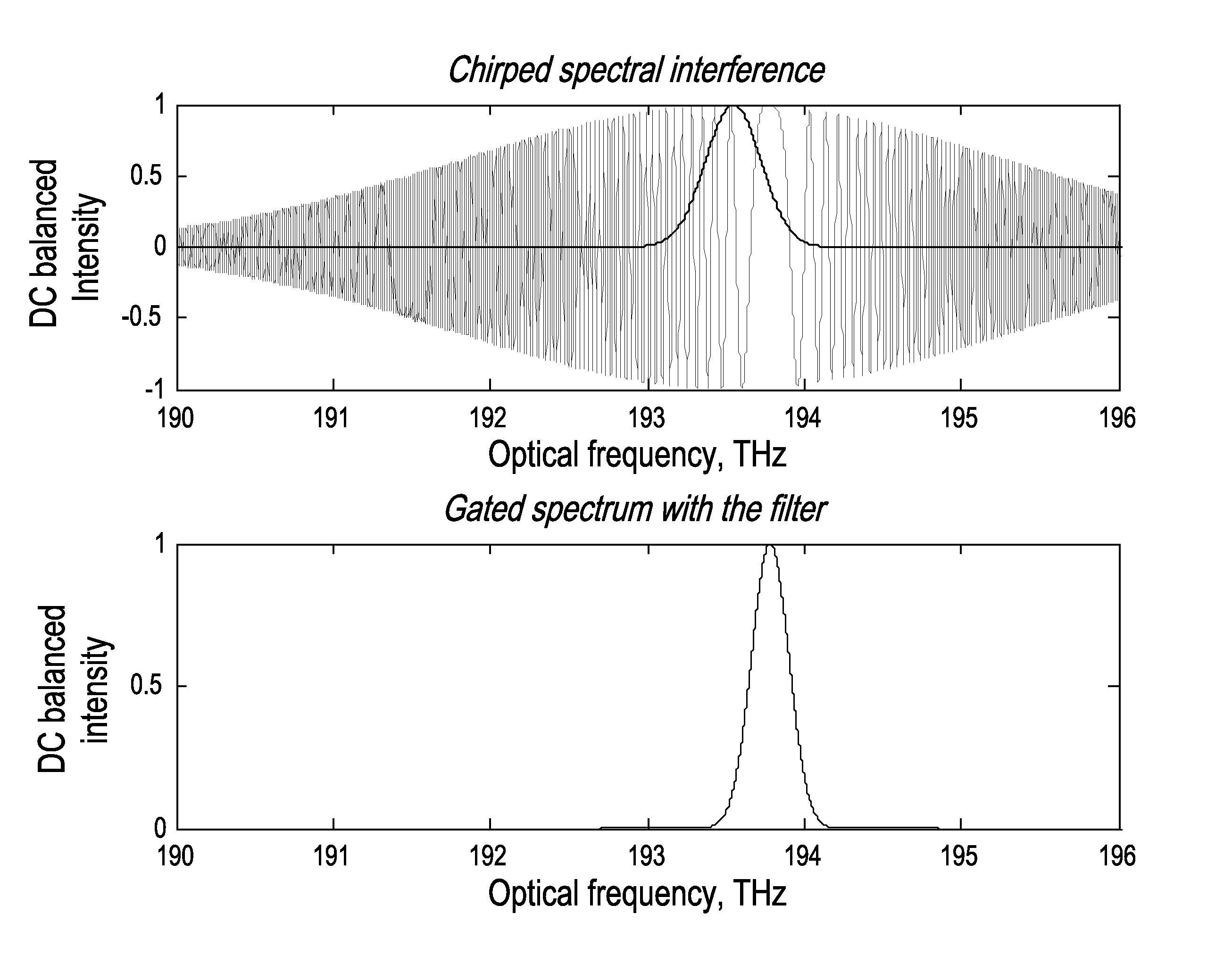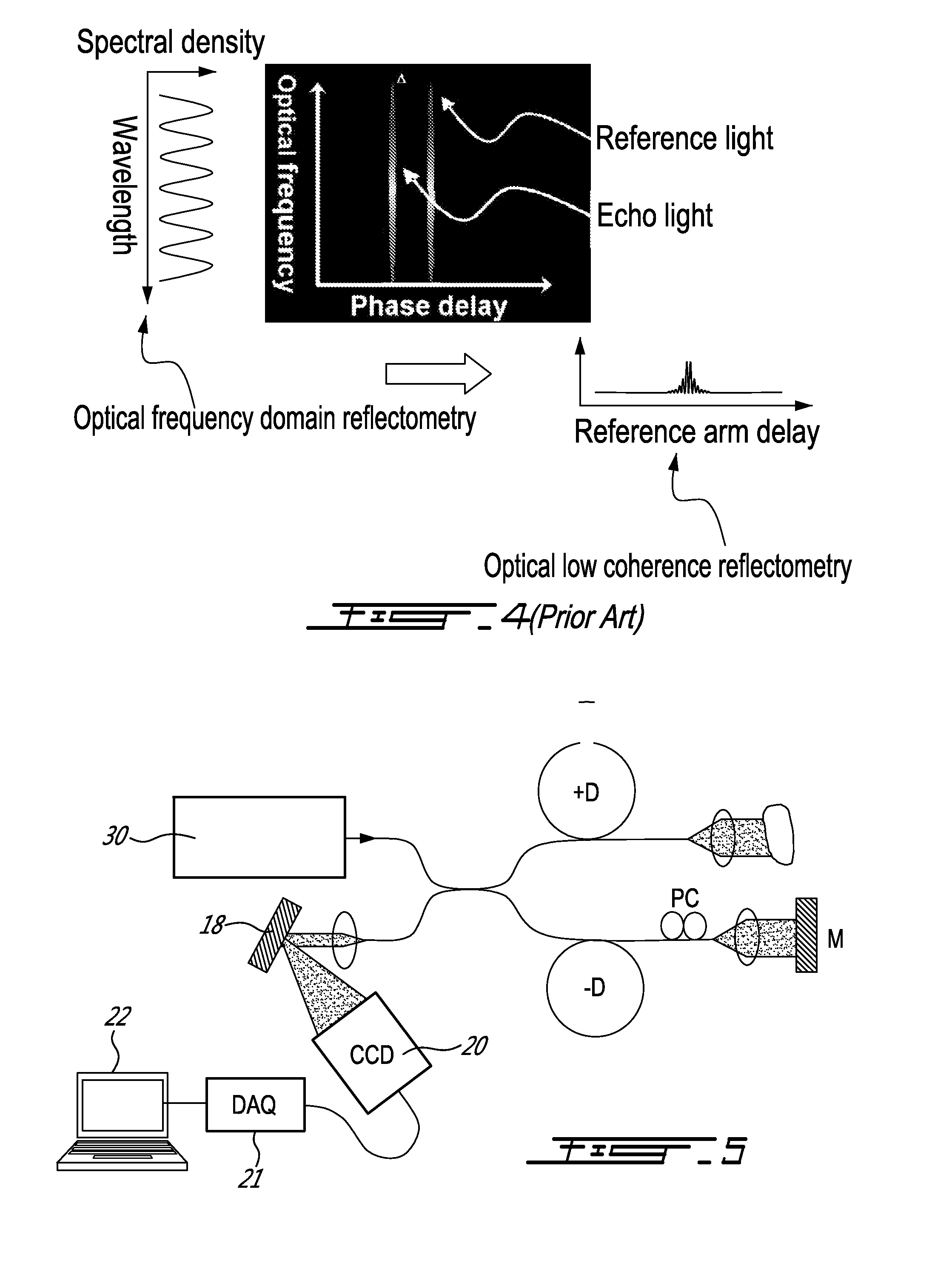Cross-chirped interferometry system and method for light detection and ranging
a cross-chirped interferometry and light detection technology, applied in the field of interferometry for light detection and ranging, can solve the problems of large bandwidth and short pulse timing, inadequacies of high-precision sub-millimeter measurements, and lack of resolution capability
- Summary
- Abstract
- Description
- Claims
- Application Information
AI Technical Summary
Benefits of technology
Problems solved by technology
Method used
Image
Examples
first embodiment
[0042]According to a system according to a first aspect of the present invention, there is provided a mid-range laser range finder based on cross-chirp interference (XCI).
[0043]In the system illustrated in FIG. 5 for example, the signal from the broadband source 30 is divided between the signal arm (+D) and the reference arm (−D). The optical delay in the reference arm can be varied by movement of the reference mirror (M). The broadband source 30 can be either continuous a wave (CW) or a pulsed wave.
[0044]The lights from the two interferometer arms are dispersed with signs. In an embodiment described hereinbelow in relation to FIG. 12, the lights from the two interferometer arms are dispersed with different amounts.
[0045]The phase gating associated with the relative phase delay between the reference and the signal arms is made in spectrally resolved detection when the two interfered beams, cross-chirped by unbalanced dispersions, are received in a spectrometer such as charged-couple...
second embodiment
[0060] there is provided a system for multiplying the detection range by the use of phase modulated multiple time-delays in the reference arm, as illustrated for example in FIG. 9.
[0061]The system illustrated in FIG. 9 is able to multiply the detection range by the use of phase modulated multiple time-delays in the reference arm. The source signal is divided between the signal arm (+D) and the reference arm (−D), and the reference arm (−D) is itself divided into a plurality of reference arms, each one having an optical delay varied by movement of a respective reference mirror (M). The source signal 30 is a wavelength swept laser, which generates a continuous wave with linear wavelength sweep in time. A fiber optic circulator 50 routes, on the one hand, the forward light wave to a fiber-optic 2×2 coupler 52 that is used to form the Michelson fiber-optic interferometer, and, on the other hand, the reflected (backward) light to the detector. Opposite signs of dispersion are applied to ...
PUM
 Login to View More
Login to View More Abstract
Description
Claims
Application Information
 Login to View More
Login to View More - R&D
- Intellectual Property
- Life Sciences
- Materials
- Tech Scout
- Unparalleled Data Quality
- Higher Quality Content
- 60% Fewer Hallucinations
Browse by: Latest US Patents, China's latest patents, Technical Efficacy Thesaurus, Application Domain, Technology Topic, Popular Technical Reports.
© 2025 PatSnap. All rights reserved.Legal|Privacy policy|Modern Slavery Act Transparency Statement|Sitemap|About US| Contact US: help@patsnap.com



